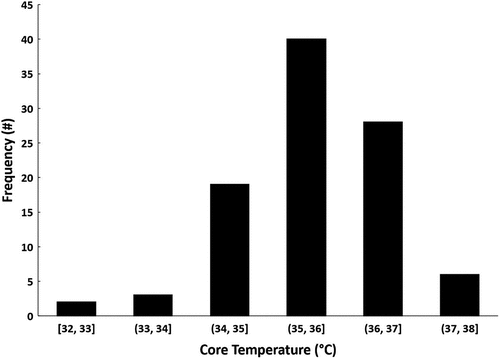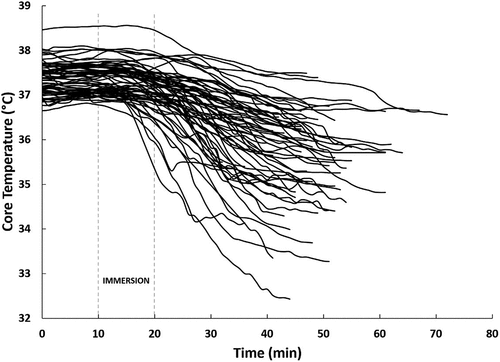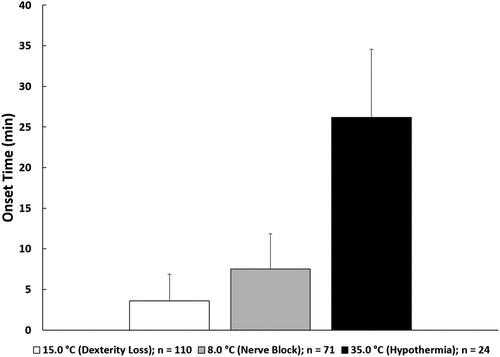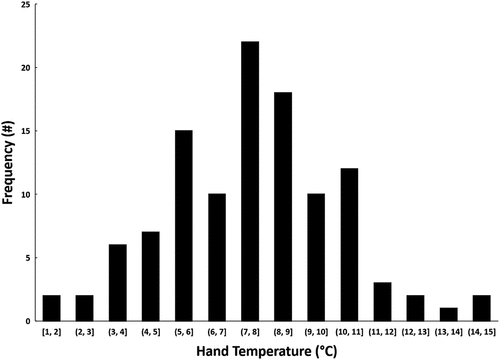Figures & data
Figure 1. Frequency counts for 96 participants, representing their lowest Tc recorded during CWI training exercises. Value ranges on the x-axis indicate the temperature ranges in which participants’ lowest Tc were recorded (e.g. a Tc of 33.6°C would be placed in the “33, 34” range).

Figure 2. Continuous Tc data (recorded and displayed each minute) from the start of training exercises (i.e. before immersion) to their lowest Tc recorded. The data displayed are only a subset (n = 66) of all participants and demonstrate the significant variability in Tc response to 10-min CWI. Note that calculates hypothermia onset time from the start of immersion (which is displayed as Minute 10 in this figure).

Figure 3. Onset times for critical Thand (15.0°C and 8.0°C) and hypothermia (35.0°C Tc), which were calculated from the start of immersion (i.e. Minute 0) to the point at which the lowest temperature was recorded.

Figure 4. Frequency counts for 110 participants, representing their lowest Thand recorded during CWI training exercises. Value ranges on the x-axis indicate the temperature ranges in which participants’ lowest Thand were recorded (e.g. a Thand of 7.2°C would be placed in the “7, 8” range).

